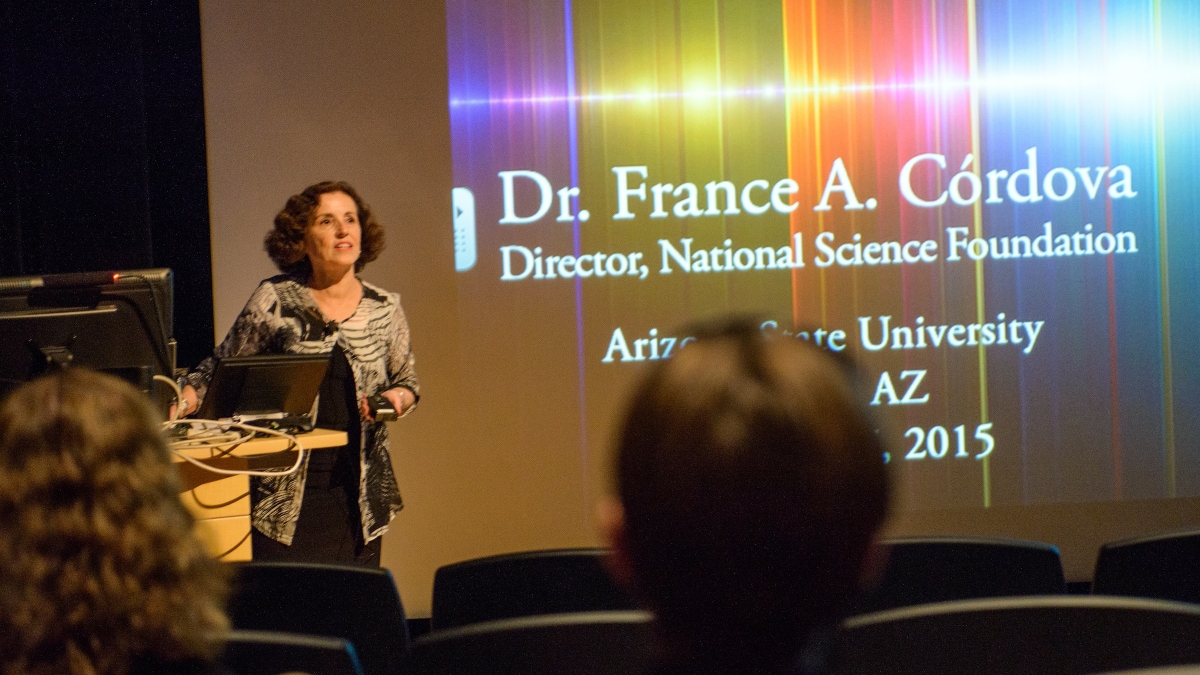NSF director calls for more funding to spur US innovation

Scientists know more about the entire universe and galaxy than they do the brain, which is why the National Science Foundation (NSF) wants to sink $144 million into understanding the most complex organ in the human body.
That amount represents the single largest expenditure in the NSF’s Administration Budget Request for Fiscal Year 2016, which calls for $7.72 billion, an increase of nearly $380 million over the 2015 appropriation.
“There are a lot of technologies out there, and we are on the verge of a lot of breakthroughs regarding the brain,” said NSF director France A. Cordova. “NSF-funded researchers are using new imaging techniques that will create a better understanding of the brain; enable engineered solutions that replace or compensate for lost function and lead to technologies that will lead to smarter technologies that will enhance overall quality of life.”
Cordova presented the proposed budget, which must first meet congressional approval, to a room filled with approximately 75 scientists, researchers and educators at Arizona State University’s Marston Theater on Feb. 18. Her visit to ASU is part of a national tour of research facilities the NSF funds with grant money.
According to Sethuraman “Panch” Panchanathan, senior vice president of the Office of Knowledge Enterprise Development, the NSF has invested approximately $53 million in research grants at ASU. Cordova singled out a STEM-based grant housed at ASU called “CompuGirls,” which helps girls aged eight to 12 years from under-resourced schools in the Greater Phoenix area to develop technical skills and learn computational thinking.
“It will be to our detriment if we don’t engage more women and minorities in the field of STEM research,” Cordova said. “We aren’t moving the needle as fast as we’d like. We need to find ways to broaden our participation and look at this in a different light than in the past.”
In addition to understanding the brain, the NSF will invest $75 million in the ever-growing stresses on the critical resources of food, energy and water, and $58 million in research funding that addresses the nation’s need for resilience in response to man-made and natural disasters.
“The need for such research was dramatically demonstrated in October 2012 when Hurricane Sandy devastated large swaths of coastal New York and New Jersey – and making it the costliest storm in U.S. history,” Cordova said.
Cordova said in 2014, the NSF received about 48,000 proposals and resulted in funding about 11,000 awards. All told, the NSF provides 24 percent of total federal support of academic basic research in all science and engineering fields in the United States, and approximately 2,000 U.S. college, universities and other institutions.
“Our motto is: where discoveries begin,” Cordova said. “The NSF invests in the early ideas, the proof of concept, the first discovery. That knowledge can then be used later on to make it something bigger.”
Cordova said the NSF has funded 214 Nobel Prize Winners in the past, resulting in breakthroughs in the fields of molecular chemistry, astronomy, economics and physics. She ended her presentation by imploring audience members to advocate to the legislature the need for research funding.
“Investments in learning and discovery will grow our economy, sustain our global competitiveness and enable America to remain the world leader in innovation,” Cordova said. “If we don’t continue to invest in science, we’re going to yield our lead to other countries, which are on an upward slope.”